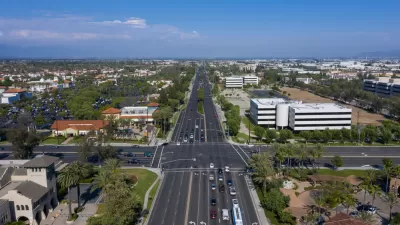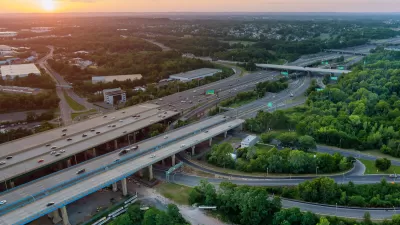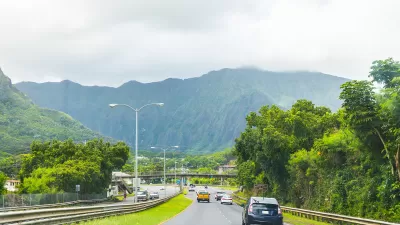The reasons for a ten-month moratorium on gas station development in the city of Rancho Cucamonga portend a major shift in transportation and land use priorities in the near future.

Steve Scauzillo reports from Rancho Cucamonga, a city located on the fringes of the Inland Empire in Southern California, where the City Council recently implemented a ten-month moratorium on new gas station development throughout the city.
The city has 34 gas stations, nearly twice as much as the neighboring city with the second-most gas stations, Fontana with 21. In Rancho Cucamonga, the number of gas stations works out to .69 service stations per square mile.
The newly implemented moratorium follows a study by city planners that produced three main findings, according to Scauzillo:
- There are a lot more in this All-America city than in any nearby city.
- Sales tax revenues from service stations are falling.
- Calls for police and fire services are rising, nearly doubling in four years.
The city credited the decline in gas tax revenue to increasing numbers of residents driving electric vehicles—a reality that has long been predicted as a reason for gas tax reforms.
According to Scauzillo, city planners will use the moratorium to generate more answers to questions like, "Should new gas stations be located near schools or parks where children play?"
Also, notes Scauzillo, most the city's gas stations are in the southwest and central areas of the city, "leading to environmental justice issues since these areas have more dense and older housing stocks."
FULL STORY: Why are there so many gas stations in Rancho Cucamonga?

Study: Maui’s Plan to Convert Vacation Rentals to Long-Term Housing Could Cause Nearly $1 Billion Economic Loss
The plan would reduce visitor accommodation by 25,% resulting in 1,900 jobs lost.

Alabama: Trump Terminates Settlements for Black Communities Harmed By Raw Sewage
Trump deemed the landmark civil rights agreement “illegal DEI and environmental justice policy.”

Why Should We Subsidize Public Transportation?
Many public transit agencies face financial stress due to rising costs, declining fare revenue, and declining subsidies. Transit advocates must provide a strong business case for increasing public transit funding.

Paris Bike Boom Leads to Steep Drop in Air Pollution
The French city’s air quality has improved dramatically in the past 20 years, coinciding with a growth in cycling.

Why Housing Costs More to Build in California Than in Texas
Hard costs like labor and materials combined with ‘soft’ costs such as permitting make building in the San Francisco Bay Area almost three times as costly as in Texas cities.

San Diego County Sees a Rise in Urban Coyotes
San Diego County experiences a rise in urban coyotes, as sightings become prevalent throughout its urban neighbourhoods and surrounding areas.
Urban Design for Planners 1: Software Tools
This six-course series explores essential urban design concepts using open source software and equips planners with the tools they need to participate fully in the urban design process.
Planning for Universal Design
Learn the tools for implementing Universal Design in planning regulations.
Smith Gee Studio
Alamo Area Metropolitan Planning Organization
City of Santa Clarita
Institute for Housing and Urban Development Studies (IHS)
City of Grandview
Harvard GSD Executive Education
Toledo-Lucas County Plan Commissions
Salt Lake City
NYU Wagner Graduate School of Public Service





























